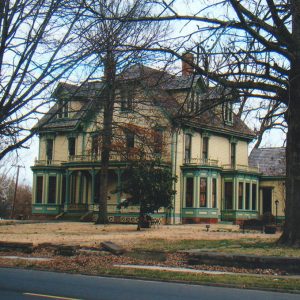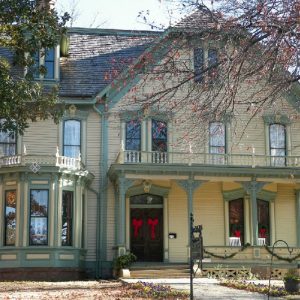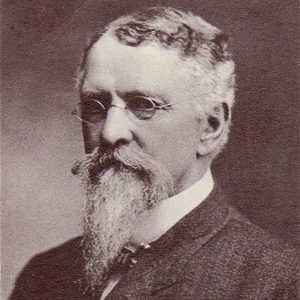calsfoundation@cals.org
Clayton House
aka: W. H. H. Clayton Home
The authentically restored Clayton House, circa 1882, stands in the center of the Belle Grove Historic District in Fort Smith (Sebastian County). This twenty-two-block area features more than twenty different Victorian-era architectural styles.
The massive Italianate-style home had its beginnings as the Sutton Mansion, built in 1852. Thirty years later, after serving as a Union army hospital during the Civil War and falling out of the hands of its Confederate-sympathizing owner, the home was purchased by William Henry Harrison Clayton. Clayton, who was the federal prosecutor of the famed court of Judge Isaac C. Parker, had it doubled in size, with extensive remodeling into the Victorian style. Appointed in 1874 by President Ulysses S. Grant as U.S. attorney of the largest federal jurisdiction in the country (more than 74,000 square miles, including Indian Territory), Clayton lived in the home for fifteen years with his wife, Florence, raising six daughters and one son. In 1897, Clayton was appointed federal judge of the newly created Central District of Indian Territory by President William McKinley, and the family moved to the town of McAlester in Indian Territory.
After being leased by the family to the Fort Smith Military Social and Athletic Club in 1897, which utilized the home’s grounds for its citizens’ band concerts, the home began in 1900 a six-decade chapter of serving as a boarding house. It was sold by the family in 1921. In 1924, a boarder named Emma High purchased the home and continued to operate it as a boarding house through the 1960s. Families occupied each of the main eight rooms, four downstairs and four upstairs. Alterations to the home during this period include the addition of electricity, new flooring, the enclosing of two exterior balconies to form sleeping porches, and the addition of at least three indoor restrooms. The original semi-detached kitchen, breezeway, and servants’ quarters had burned to the ground in approximately 1925. A fire broke out in the 1960s in an upstairs bedroom, spreading to the attic, but it was extinguished without the home being ruined. A portion of the original antebellum home’s roof can be seen in the attic.
By 1969, the home was in deep disrepair, and High could find no buyer. The City of Fort Smith scheduled the home’s demolition, which was halted by citizen Julia Yadon, who decried the recent loss of Victorian-era homes in the neighborhood. Yadon formed the charitable Fort Smith Heritage Foundation, which led the home’s authentic restoration. Architects took the home apart piece by piece and put it back together to reflect its original Victorian grandeur.
The home opened as a historic house museum in 1977 after seven years of restoration work. The wood-frame structure with brick and stone foundation features the original monolithic stone front steps, original grand walnut staircase, cypress double front doors, cast-iron coal-burning fireplaces in each of the eight large rooms, large bay windows, and portions of the original flooring. Ceiling lights from the downstairs portion of the home were removed; hidden outlets enable the use of electric lamps. The semi-detached kitchen and servants quarters were reconstructed in 1982. During that project, the original root cellar and cistern were discovered and restored.
Today, the home is filled with period antique furniture, including many Clayton family pieces. The majority of the other furnishings belonged to Agnes Oglesby, who had been acquainted with the Clayton family and who lived to the age of 105. She donated her entire estate of Victorian furniture when the museum opened in 1977.
For additional information:
“Belle Grove Historic District.” City of Fort Smith. https://www.fortsmithar.gov/community/about-the-fort-smith-community/fort-smith-historic-districts/belle-grove-historic-district (accessed October 30, 2025).
Bynum, Samantha. “Frontier Homestead to Victorian House Museum: The William H. H. Clayton House.” MA thesis, Arkansas Tech University, 2014.
Clayton House. http://www.claytonhouse.org/ (accessed October 30, 2025).
“W. H. H. Clayton Home.” National Register of Historic Places nomination form. On file at Arkansas Historic Preservation Program, Little Rock, Arkansas. Online at https://www.arkansasheritage.com/docs/default-source/historic-site-survey/robinson-hd-pdf.pdf?sfvrsn=3b652c2f_0 (accessed October 30, 2025).
Julie Moncrief
Fort Smith Heritage Foundation


 Clayton House
Clayton House  William H. H. Clayton House
William H. H. Clayton House  William H. H. Clayton
William H. H. Clayton 



Comments
No comments on this entry yet.